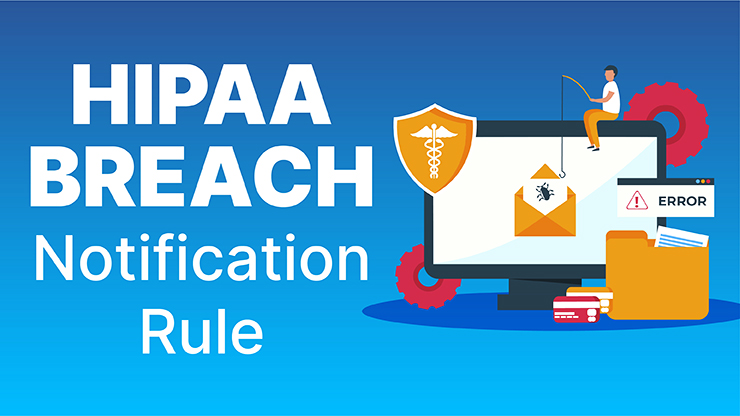Trade Policy
Trade policy
ECO 615 Week 6 Final Research Paper
Trade policy has been greatly influenced by economists, who also offer a compelling case for free trade and the elimination of trade obstacles. Even though the goal of a trade agreement is to liberalize trade, domestic and international political realities have a significant impact on the actual provisions. The world has changed significantly since David Ricardo originally put forward the law of comparative advantage, and economists have recently updated their theories to take into account trade in production variables like capital and labor, the expansion of supply chains that now account for a large portion of global trade, and the achievement of neo-mercantilist nations in accomplishing rapid growth. This paper puts forward an argument in support of the comparative advantage theory’s influence in supporting globalization and enabling international trade.

Comparative Advantage Theory
Global commerce and trade have gradually changed over the past few decades, and many developing countries have adopted export-led industrial development strategies and grown in importance as trading partners for countries with advanced economies. For instance, the East Asian countries that have seen rapid industrialization since the early 1960s and have improved their populations’ living conditions and overall national strength have benefited most from these policies, especially Japan and the Four Asian Tigers (Krist, 2022). The East Asian marvel model of this region’s economic growth techniques emphasizes the importance of swift integration into the global supply chain and encouraging exports of domestically produced goods. Comparative advantage theory helps understand this trajectory and how countries ensure sustainability in international trade.
Comparative advantage theory focuses on a country’s ability to produce a specific good or service at a lower opportunity cost than other countries or trade partners. The theory explains why countries, especially weaker economies, can benefit from trade with advanced economies like US, UK, and Germany (Krist, 2022). When adopted to understand international trade, comparative advantage theory describes products that countries can offer more cheaply and easily than others, illustrating the benefits of trade. It is a fundamental provision of the argument that all actors, in all situations and in all periods, can mutually benefit from each other in a cooperative and voluntary trade. Comparative advantage theory is a fundamental principle of international trade theory.
Understanding comparative advantage theory involves understanding opportunity cost, which is the probable benefit a country can lose out when they select one option over the other. Everyone wants the best deal, and countries as traders understand this and take advantage of it. For instance, when a country seeks to outsource labor, the most suitable destination is East Asian countries, where cheap labor is available compared to European countries. Opportunity cost can also be thought of as the best available option on a trade-off basis (Hayes, 2023). To demonstrate comparative advantage, David Ricardo used England and Portugal and showed that both benefited mutually by specializing and trading per their comparative advantage. In this illustration, Portugal made wine cheaply, and England manufactured cheap cloths. Therefore, Ricardo concluded that “a country would stop producing a product that is costly to generate and focus on the product they have a comparative advantage” (Krist, 2022). It was the case when England stopped producing wine and Portugal terminated cloth manufacturing, which was to the advantage of both countries, resorting to trading with each other. This case clearly indicates how comparative advantage facilitates globalization and international trade.
China’s trade with the US is another example of comparative advantage involving cheap labor. China has captured a significant share of the US market by producing simple consumer goods at a lower opportunity cost due to the availability of cheaper labor. Unlike China, the US’s comparative advantage is in labor specialization and capital-intensive labor (Hayes, 2023). Most industries in the US produce sophisticated goods at a lower opportunity cost. Therefore, both countries have significant market shares in either market environments, meaning that people in the US can access cheaper and simple goods from China, and Chinese people can access more sophisticated products like the iPhone from the US.
The comparative advantage theory demonstrates the unsuccessful protectionism most countries have attempted to adopt to protect local industries because cheaper and more available products and services will always find their way into a country. Most countries have removed themselves from international trade agreements like the US withdrawal from the Trans-Pacific Partnership (TPP), which works well for the local market through increased jobs and industry growth (Krist, 2022). However, this approach is short-term and unsustainable in the long term because, at some point, a country experiences a disadvantage relative to the neighbors or trading partners already producing the products or offering services at a lower cost. Countries cannot survive without each other, and eventually, the US will enter another trade agreement with the same or different countries with relative comparative advantage (“The theory of comparative advantage,” 2019). Countries engaged in international trade begin by identifying trading partners with comparative advantages so that the trading relationship can be mutually beneficial.
The comparative advantage theory justifies globalization because countries can possess greater material outcomes when producing only goods they have comparative advantage and trading with partners, although it is vital not to overspecialize. For instance, China and South Korea have gained significant productivity through economic specialization in particular export-focused industries where they enjoy comparative advantage (Hayes, 2023). Comparative advantage enhances production efficiency by focusing on tasks and goods one can generate cheaply and easily and importing products that are costly and time-consuming to produce. Eliminating less-efficient production increases a country’s or organization’s margins.
Adopting the comparative advantage theory allows countries to trade even when one country possesses an absolute advantage in generating all the traded products and services, per Ricardo’s observations. For instance, the US can trade with nations like Burundi, although the US can produce all traded goods cheaply (Bashir et al., 2023). Trade takes place because of comparative advantage and relative efficiency. The total production increases, and consumers have more goods to use when countries specialize in products they have a comparative advantage. Focusing on factors of production, comparative advantage theory, as enhanced by Bertil Heckscher and Eli Ohlin, looks at what factor of production a country has in abundance. Therefore, a country would produce more of a product in which it has a relative abundance of a factor of production and import goods and services where it has relatively less abundance of a factor of production (Krist, 2022). The England-Portugal example can also be used in this case. Cloth production is cost-intensive, and England was able to specialize in it because it has relatively abundant capital. Similarly, wine production is labor intensive, and Portugal managed to specialize in it because it has relatively abundant labor. Therefore, both countries would benefit more if they freely traded, whereas England would export clothes and import wine. This approach maximizes efficiency, increasing the total production of both wine and cloths; hence there would be more available for consumers to utilize. This theory is also true in scenarios involving multiple products and multiple countries.
Most economists, including Dominick Salvatore, perceive the theory of comparative advantage as fundamental. Salvatore, in his book, International Economics, posits that “comparative advantage theory is one of the most significant and remains an unchallenged law in economics” (Krist, 2022). It is the cornerstone of international trade and other principles for international trade. Besides capital and labor, the comparative advantage theory holds for other factors of production like natural resources and technology, although these have divided discussions because some countries produce goods cheaply, although they import raw materials than it would for the country producing the raw materials. Additionally, factors of production can change with time, impacting comparative advantage (Krist, 2022). For instance, countries with cheap labor can enhance their education system to produce a highly skilled labor force. Conclusively, although comparative advantage holds for most factors of production, it is not constant, and countries can enhance their comparative advantage.
In concluding the argument for comparative advantage, the theory holds that all nations can benefit from free trade because specializing in what a country is good at increases production efficiency and total production, availing more goods and services for consumer utilization. Countries identify partners with comparative advantages and develop trade agreements that focus on streamlining trade relationships by, for instance, creating free trade policies, including reducing foreign barriers to imports and exports and helping strengthen more competitive industries that can provide a more comparative advantage, shifting focus from less productive activities to more economic ones.
Opposition
Oppositions to comparative advantage theory criticize it for basing primarily on the labor theory of value. The assumption of labor cost is deemed unrealistic because only labor costs are involved in determining comparative advantage when in reality, non-labor costs are also vital in producing goods and services (Meoqui, 2021). Money costs, rather than labor costs, should be the basis of this determination because national and international transactions on goods and services are based on money costs. The labor cost assumption is also based on homogenous labor, which is highly unrealistic because labor is typically heterogenous, with different levels of grades.
The free trade assumption is also argued to be unrealistic. The opposition asks why some countries continue to be poor and others enrich themselves through trade relations (Chand, 2019). Take the Democratic Republic of Congo as an example because this nation continues to languish in poverty despite being the most mineral-rich country in the world, while advanced economies acquiring minerals from it continue to enrich themselves by turning the minerals into pricy finished goods. The DRC continues to remain poor at the expense of others, raising concerns about the theory of comparative advantage in regard to factors of production, in this case, raw materials.
The opposition also argues that the determination of comparative advantage cannot be based on similar tastes because tastes differ within a country’s different income brackets, and most countries’ economies grow, changing their trade developments and relationships with other countries. Widely, the comparative advantage theory assumes that costs remain static for the products and services a country specializes in (Chand, 2019). Specialization means increasing production, hence a parallel increase in production costs, which are unaccounted for in the theory’s assumptions.
Moreover, the theory does not account for other costs, including transport costs, that are a significant determinant in international trade. Ricardo does not consider transport costs when determining comparative advantage in international trade. Transport costs are core in determining world trade patterns. It is an independent factor of production like the others. For example, high transport costs can nullify a country’s comparative advantage and gains from international trade. Also, Ricardo’s model adopts the relationship between two countries and two commodities, focusing on the example of England and Portugal, which is unrealistic because international trade involves multiple countries and multiple products. Additionally, the theory assumes full employment like other classical economic theories, which makes this theory static (Chand, 2019). According to Keynes, full employment is not ideal, and most economies experience underemployment. Some economists argue that the theory does not apply in a country that seeks to protect its self-interest, therefore, choosing not to import a commodity from another country for strategic or military considerations (Chand, 2019). The existence of self-interest opposes the theory of comparative advantage. Conclusively, the opposition provides that most comparative advantage theory assumptions are unrealistic and fail to capture the realism of international trade.
Refutation
The concerns about the theory of comparative advantage are genuine and, in most instances, depict deficiencies in most assumptions. However, economists defending this theory counter critics by stressing that the opposition cannot base their argument on Ricardo’s initial development and example used to illustrate the theory, which was based on a two-country, two-commodity relationship (Krist, 2022). For instance, when the critics argue the theory is unrealistic for using the two-countries, two-commodities relationship, economists like Bertil Heckscher and Eli Ohlin come forward to show that the theory can apply for multiple countries and multiple products and also to other factors of production, including raw materials (Krist, 2022). The theory has been enhanced over the years to include concepts like relative abundance to increase its generality. Currently, the theory holds equally well for other production factors, countering concerns about unrealistic labor and transport cost assumptions.
In fact, economists continue to highly regard the comparative advantage theory, considering it as imperative and unchallenged and remains the cornerstone of the pure international trade theory. The arguments for this theory state that factor endowment may change over time, giving room for theory enhancement to fit the changes in the international market (Krist, 2022). Additionally, countries continue to adopt this theory to inform their trade partnership decisions, implying that the theory is still relevant and significant in international trade. Nonetheless, the critics cannot be overlooked, and can only be adopted to make the theory better in promoting equal and just international trade patterns.
Conclusion
Economic theories help explain how the economies work, describing various economic forces and variables that affect trading patterns. Countries might unintentionally decide irrationally on who to engage without a proper understanding of economic theories. Comparative advantage is an economic theory that helps understand international trade and how countries mutually benefit even when one country has an advanced economy and the other is still developing. Comparative advantage theory states that countries would specialize in producing and offering products or services they have a comparative advantage. This approach enhances production efficiency, which increases total production, and customers can access more goods and services. The opposing side critic the theory perceiving its assumptions as unrealistic, but these critics can be adopted to enhance the theory. Additionally, other theories have come in defense of the comparative advantage theory, stating that it can also apply to other factors of production and there is room for enhancement as the economies change.
References
Bashir, M. A., Dengfeng, Z., Radulescu, M., Secara, C. G., Staciu-Tolea, C., & Gong, Z. (2023). Sustainable FDI and comparative advantage for product export survival: A developing countries perspective. Economic Research-Ekonomska Istraživanja, 1-25. https://doi.org/10.1080/1331677x.2022.2164035
Chand, S. (2019). Comparative Costs Theory: Assumptions and Criticisms | Economics. Your Article Library. https://www.yourarticlelibrary.com/economics/comparative-costs-theory-assumptions-and-criticisms-economics/11069/
Hayes, A. (2023, November 19). What is comparative advantage? Investopedia. https://www.investopedia.com/terms/c/comparativeadvantage.asp#
Krist, W. (2022). Chapter 3: Trade agreements and economic theory. Wilson Center.https://www.wilsoncenter.org/chapter-3-trade-agreements-and-economic-theory
Machado, P. S., & Trigg, A. B. (2021). On absolute and comparative advantage in international trade: A Pasinetti pure labour approach. Structural Change and Economic Dynamics, 59, 375-383.
Meoqui, J. M. (2021). Overcoming absolute and comparative advantage: A reappraisal of the relative cheapness of foreign commodities as the basis of international trade. Journal of the History of Economic Thought, 43(3), 433-449.
The theory of comparative advantage. (2019). Four Central Theories of the Market Economy, 73-124. https://doi.org/10.4324/9781315543109-3
Do you need a similar assignment done for you from scratch? Order now!
Use Discount Code "Newclient" for a 15% Discount!










:max_bytes(150000):strip_icc()/diverse-people-sit-in-circle-and-brainstorm-ideas-1163038341-c0805b192d7f42a4b82fbf93b1b97d4e.jpg)
